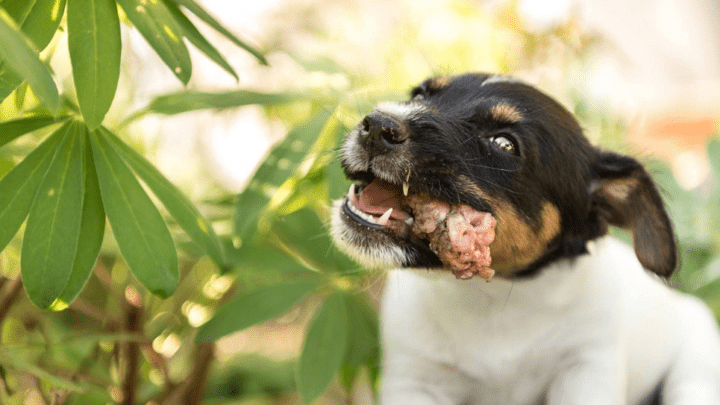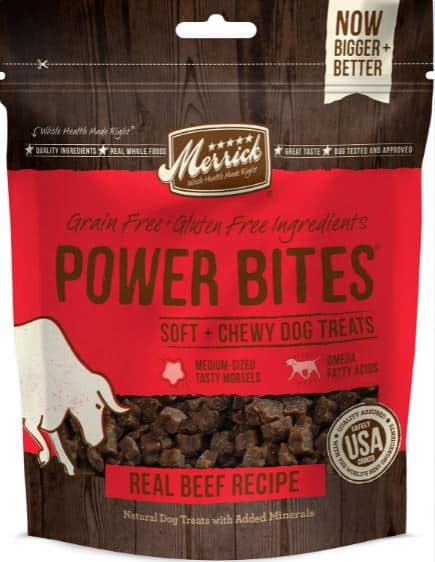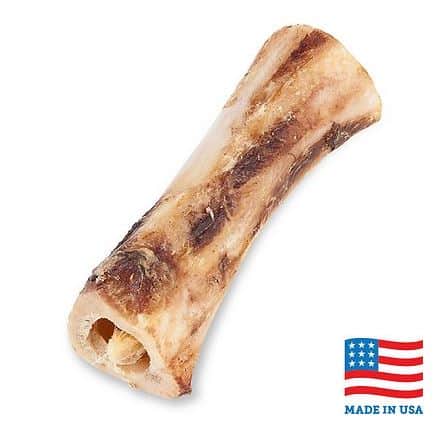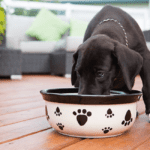- Your Dog Ate Chicken Bones, What To Do? Here Are 5 Important Steps To Follow - July 15, 2022
- How To Stop Dog From Licking Paws – Break The Habit! (Top Causes & Easy Solutions) - February 8, 2022
- 7 Best Fresh Dog Food Delivery Services - December 12, 2019
This is Jack. In a former life, he was a starving stray, running around the wooded mountains of New York, apparently eating whatever he could find. When he became part of our pack after being scooped up by a dog catcher, he was emaciated and ill, and although he has been healthy and well-fed for almost a decade now, his scavenger instinct still holds powerful sway over him.
On a regular basis, Jack eats roadkill, trash, bones–really anything he finds in the backyard or along the sidewalk while we’re out for our daily walks. He knows commands like “drop it” and “leave it,” but sometimes the smell of meat is too delectable to “drop” or “leave,” and in those instances, his instinct to scavenge wins over his training. It probably comes as no surprise, then, that Jack has enjoyed his share of chicken bones, a particularly dangerous indulgence.
While some controversy exists over whether raw bones and the raw food diet might actually be beneficial for your dog’s health, everyone seems to agree that cooked bones pose a threat. Cooked bones become brittle, and they can splinter in your dog’s throat, or digestive tract, causing choking or perforations. If your dog ate chicken bones, there is no need to panic. There are five easy step-by-step instructions you can follow to help protect your dog:
- Commands
- Check for choking and chewing
- Call your vet
- Watch and wait
- Learn and prevent.
Step 1: Commands
If you notice that Rufus has gotten a hold of a chicken bone, the first step you should take is to employ his training. If he knows a command such as “drop it,” “leave it,” “out,” or any other command you have taught him and use regularly to tell him to spit an object out, use it. If he is like Jack, there is a 50/50 chance he will elect to obey (after all, chicken bones are a delicacy).
Even if your dog refuses to drop the bone, you may want to avoid attempting to pry it from his teeth or mouth, as some experts believe this type of action can lead to food aggression in some dogs, conditioning them to believe that at any point, someone could try to remove their food source, and that food is something to be guarded and protected.
If your dog listens and drops the bone, praise him for listening (do not punish him), and immediately dispose of the cooked bone. Next, make sure the area is clear of any other hazards. Consider rewarding your dog with jerky pet treats, but avoid chicken jerky treats as they may confuse. How would you feel if you were told you couldn’t eat chicken bones and then were given something that tastes like chicken wings?
If your dog does not listen and ate the chicken bone, move on to Step Two.
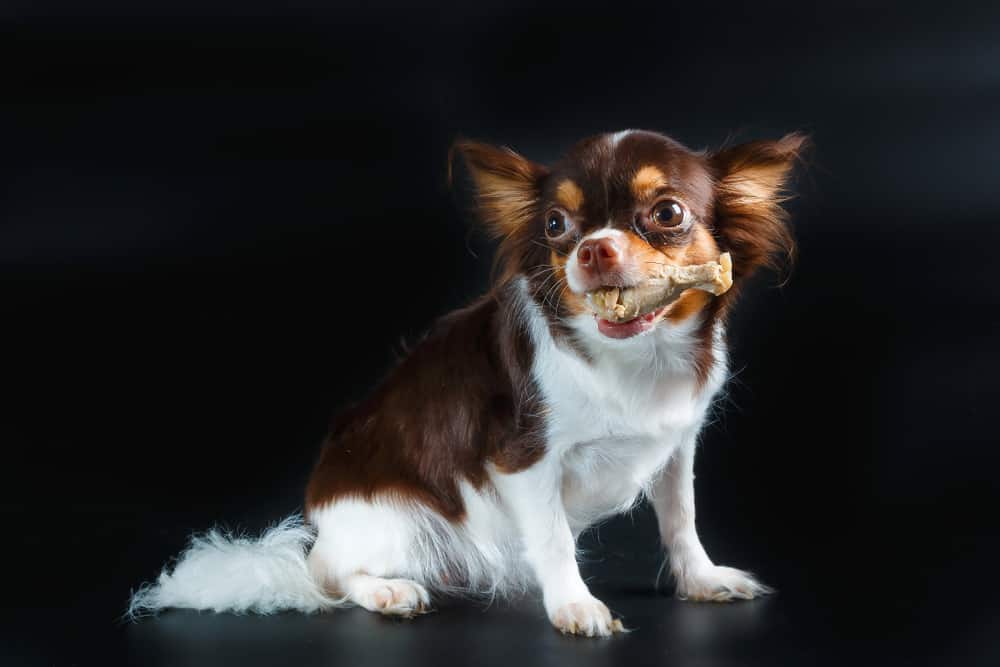
Step 2: Check for Choking and Chewing
If your dogs eat chicken bones, he is safer if he is chewing it than if he is simply gulping it down. If you can tell he is chewing, you can breathe a little easier–the smaller pieces more digestible. In fact, dogs eat like this in the wild–but they are ingesting are raw meaty bones, making them more supple and safer on the digestive tract.
If your dog is not chewing the chicken bone but is instead it swallowing whole or gulping, this is can cause problems, as the bone could splinter or become lodged in the throat. If this is the case, be aware of the signs of choking, which can include: gagging, coughing or wretching, drinking excessively, throwing up, an inability to sit down comfortably, anxious pacing, and licking lips. If you notice any of these signs of choking, call your vet right away. If your dog cannot breathe, dog owners may also want to take steps to save their dog.
If your dog chews and swallows the bone, and does not exhibit any of these symptoms, move on to Step Three.
Step 3: Call Your Veterinarian
If your dog ate chicken bones, call your vet right away. You will want to describe the situation in detail and ask your veterinarian for step-by-step instructions to follow over the next few days and make sure that they’re all done religiously. If your dog has chewed and swallowed the bone without difficulty and appears to be behaving normally, your vet is likely to give you advice similar to Step Four below.
Step 4: Watch and Wait
The next step is to be aware of your dog’s behavior over the next 12 to 72 hours. You may also want to give him a little white bread to help coat any sharp edges of the bone as they pass through his digestive tract and prevent a puncture of his intestines.
Over the next 12 to 72 hours, if any of the following symptoms occur, take your dog to the vet immediately: bloody stool, difficulty sitting comfortably, difficulty passing stool, abdominal swelling, anxiety, panting, shallow breathing, whining, lethargy, vomiting or dry vomiting. Any of these can indicate internal bleeding, which may be a sign of perforation in the stomach, intestines, or other areas of their digestive tract caused by the sharp edges of bone fragments.
Step 5: Learning and Prevention
While Fido might want to eat chicken bone again, chances are, you’re not as enthusiastic. Here are some ways to prevent future chicken bone incidents:
- invest in a dog-proof trashcan.
- keep all table scraps out of reach.
- be extra mindful when you have chicken wings or avoid having cooked chicken with bones in the house.
- give your dog pet treats or other raw bones (such as knucklebones or rib bones) to keep them busy while snacking.
maintain a keener eye.
Don’t Panic
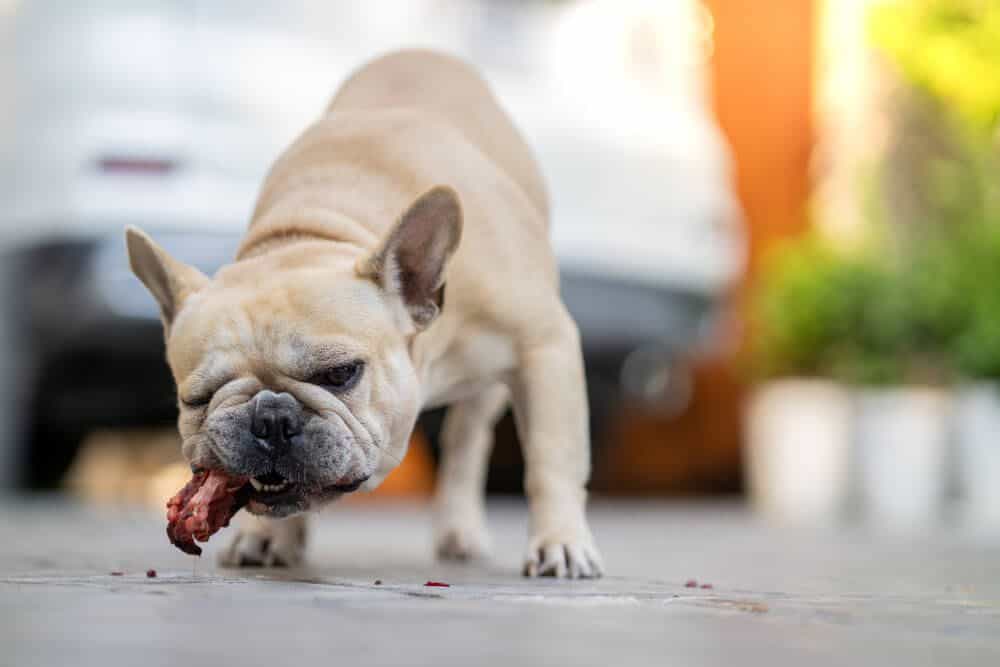
If a dog eats a chicken bone, it is not an ideal situation for concerned pet owners. Eating chicken bones (cooked) has the potential to seriously injure or even kill your dog, but most dogs can chomp up a chicken bone without incident. As for the controversy about raw bones, raw meat, and the raw food diet, that’s a whole other story.
Provided your dog chews the bone adequately, chances are the pieces will be small enough for him to safely pass without any problems. That said, do your best to prevent Rufus from ever getting a hold of a cooked chicken bone, as prevention is the surest form of protection. Remember, a good boy deserves a raw meaty bone to chew on every now and then, just don’t share your chicken wings.
Product Recommendations
iTouchless 13-Gallon Pet Proof Sensor Trash Can
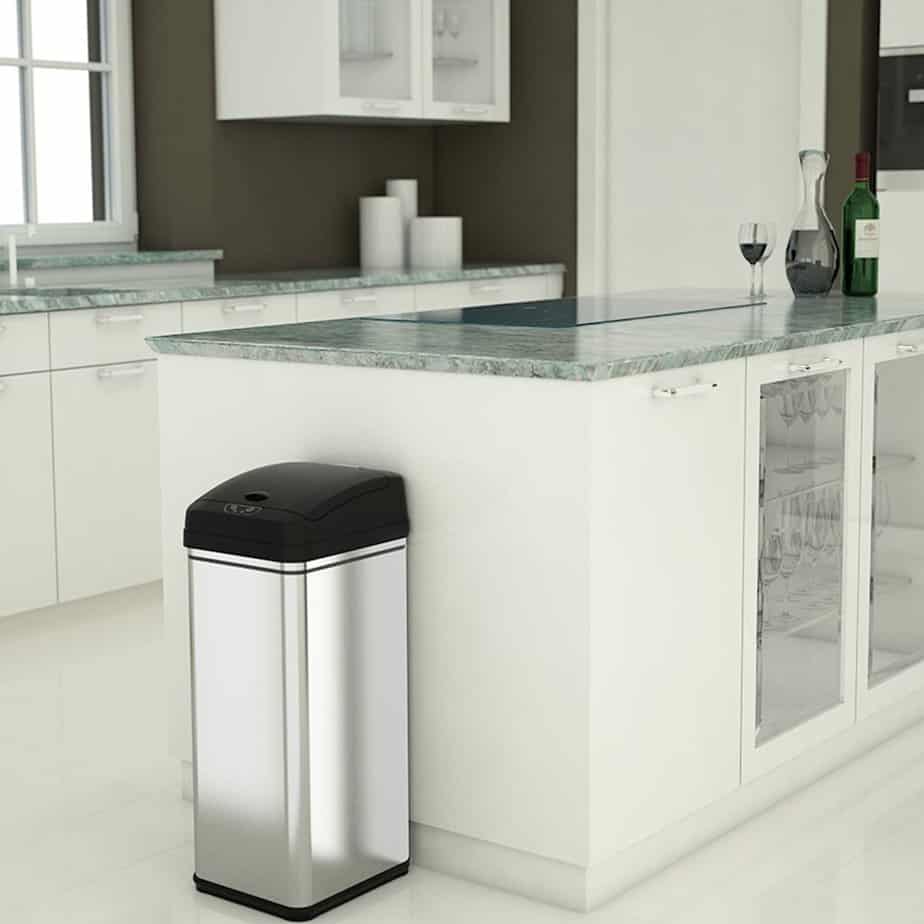
If you’re worried about your dog eating cooked chicken bones in the home, then investing in a pet-proof trash can is a must. This way, you can immediately dispose of any bones and not have to worry that when you’re out of the room, the dog is going to somehow get into the trash can and eat them anyway!
The iTouchless Pet Proof Sensor Trash Can is motion activated and only opens when you wave your hand above the sensor. Firstly, this is super hygienic, but also it means your dog can’t open it! Even if they jump up and hit the top of the bin, it won’t open unless they magically learn to hover their paw above the sensor, and no matter how smart you think your dog is, without training, I doubt any dog could figure this out!
Not only that, it comes with an AbsorbX Natural Activated Carbon Odor Filter which will cancel out any of those chicken bone smells and reduce the likelihood of your dog trying to get into the trash can in the first place.
Easy-on and easy-off lock prevent dogs and cats from opening the sensor-activated lid. Just the motion of your hand opens the lid automatically! It’s a hygienic and convenient choice.
Merrick Power Bites
Merrick Power Bites Real Texas Beef Recipe Grain-Free Soft & Chewy Dog Treats are natural, meaty rewards that are crafted with real, deboned beef first.
Another way to help prevent any emergencies when it comes to eating unwanted food is to train your dogs. Ideally, you want to train them from a puppy either the “drop it”, “leave it” or “out” command to make them drop something they shouldn’t have. As with all things, the more you practice, the better your dog will be and the more likely they are to give up a chicken bone for you!
To achieve this, you’re going to need some tasty training treats and that’s where the Merrick Power Bites come in. They come in a variety of flavors including beef, rabbit, and salmon. As mentioned before, we don’t recommend going for a chicken-flavored treat for this particular problem. The top five ingredients in the beef treats are deboned beef, potatoes, peas, potato protein, and potato starch. Using all-natural ingredients, and at just 5 kcal per treat, you don’t need to feel guilty about using as many treats as it takes for your dog to get the “leave it” command down to a T!
Bones & Chews Roasted Marrow Bone
Roasted Marrow Bone is full of flavors sure to satisfy your dog’s natural palate. These 100% natural USA beef bones are slow-roasted to preserve the tasty, natural meat flavor.
One other option to help prevent your dog from eating chicken bones is to have them distracted and enjoying their own, safe and healthy raw bone! The Bones & Chews Roasted Marrow Bone is extremely popular thanks to the full, irresistible flavor and natural marrow that’ll keep even the most aggressive chewers busy. The bones are all sourced and manufactured in the USA and do not contain any artificial flavors or preservatives. Give your dog this bone and even if you drop a chicken bone on the floor they probably wouldn’t even notice!
Continue reading:
Halo Holistic Chicken & Chicken Liver Adult Dry Dog Food Review
Nutro Wholesome Essentials Large Breed Chicken Dry Dog Food Review
Chicken Soup for the Soul Large Breed Adult Dry Dog Food Review

